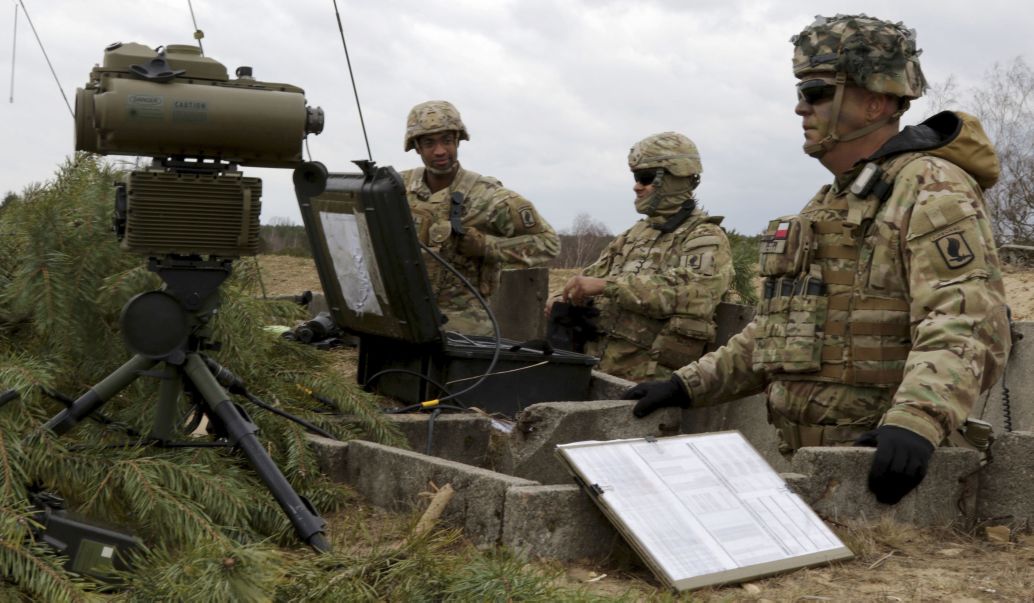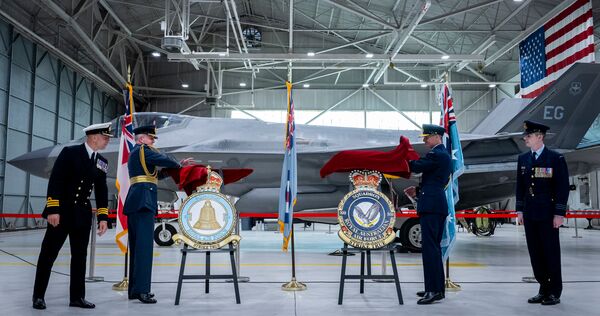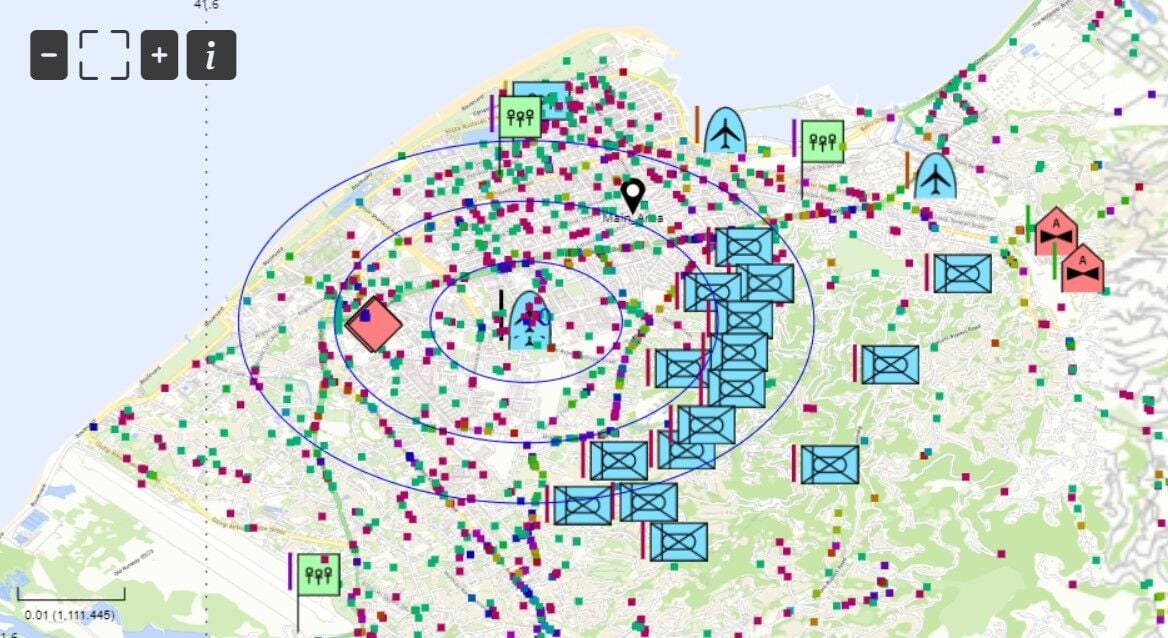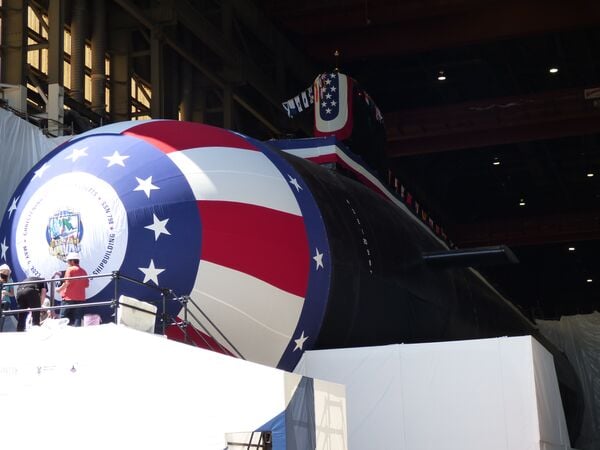- About
- Intara
- Capabilities
- Advisory
- Resources
- News
- Store
US Army preps for TITAN ground station experimentation
24 May 2021
by Carlo Munoz
US Army officials are preparing to implement a full-scale experimentation plan for new ground stations designed for the Tactical Intelligence Targeting Access Node (TITAN) programme, with service leaders anticipating development of a full-on TITAN ground station by 2022.
The TITAN ground station platform, as envisioned, will consolidate functionalities of several legacy fixed and mobile ground stations, and then fuse the collected data from various ground, aerial, and space-based sensors into a single station, according to Willie Nelson, director of the army’s Assured Positioning, Navigation, and Timing/Space Cross-Functional Team (APNT/Space CFT). That capability will also be scalable to support all echelons from brigade to division, Nelson added.
Once functional, the technologies within the ground station will be able to collect, curate, fuse, and disseminate collected data across domains – including satellite constellations – and provide target data for long-range fire support missions. Theoretically, army long-range artillery units will be able to leverage targeting co-ordinates gathered in space to locate and terminate battlefield threats. This deep-targeting capability is one of several key capabilities that army leaders are pursuing, as part of the army’s Multi-Domain Operations 2028 concept.

RAF, RAAF reform respective 80 Sqns as US-based F-35 data centres
18 April 2024
by Gareth Jennings


The chiefs of the RAF and RAAF reconstituting their respective 80 Squadrons during a joint ceremony at Eglin AFB in the US. (Crown Copyright)
The UK Royal Air Force (RAF) and the Royal Australian Air Force (RAAF) stood up their respective 80 Squadrons on 17 April to serve as US-based data units for the Lockheed Martin F-35 Lightning II Joint Strike Fighter (JSF).
Announced by the RAF, the two separate but linked squadrons were reconstituted during a joint ceremony at Eglin Air Force Base (AFB) in Florida.
“At the event, the [UK] Chief of the Air Staff, [Air Chief Marshal] Sir Richard Knighton, and [Australian] Chief of the Air Force Air Marshal Robert Chipman, formally awarded the dormant 80 Squadron number plates for each service to their respective teams within the Australia, Canada, and United Kingdom Reprogramming Laboratory [ACURL],” the RAF said.
Hadean, 4C Strategies integrate products to reduce training burden
18 April 2024
by Giles Ebbutt


A screenshot of the Hadean POLI constructive simulation displayed through the 4C Strategies Exonaut training management software. (Hadean)
Hadean and 4C Strategies have successfully integrated a constructive simulation with Exonaut exercise management software, utilising Hadean's spatial computing platform.
The integrated solution, displayed at the International Training Technology Exhibition & Conference (IT²EC) 2024 in London, enabled Hadean's Pattern of Life Indicator (POLI) constructive simulation to be controlled from within 4C Strategies Exonaut software.
Exonaut is widely used in the UK and NATO as an exercise management tool, while constructive simulation is fundamental to effective command and staff training. Integrating the two previously separate functions offers the potential to improve training.
Explaining the integration, Paul Steel, UK military sales director for 4C Strategies, told Janes
US lawmakers grill US Navy officials on proposed shipbuilding budget
18 April 2024
by Michael Fabey


US lawmakers question the US Navy request to fund only one Virginia-class submarine (pictured) in fiscal year 2025. (Janes/Michael Fabey)
Members of the House Armed Services Seapower and Projection Forces Subcommittee raised concerns about the proposed US Navy (USN) plan to pare down key shipbuilding programmes on 17 April during the subcommittee hearing on the USN's Fiscal Year (FY) 2025 budget request.
While the USN – as was the case with the rest of the Pentagon – was charged with keeping a lid on costs, lawmakers said they felt the USN went too far with some major programmes.
Connecticut Congressman and ranking member of the Seapower and Projection Forces Subcommittee, Joe Courtney, set the tone with his opening statement.
“The Fiscal Responsibility Act (FRA), which [was] passed in May 2023 to avert a default on the full faith and credit of our nation's currency and bonds, mandated a 1% increase in the Department of Defense's budget request for fiscal year 2025,” Courtney said.
US Army officials are preparing to implement a full-scale experimentation plan for new ground statio...
Latest Podcasts
Iran Israel analysis
In this podcast Janes analysts discuss the Iranian attacks on Israel on the 14 April. They highlight the military systems used by Iran and the performance and impact of these on Israel. They also discuss the implications of this attack goi...
Listen nowJanes Case Studies
Using Janes Intara to build a common intelligence picture: Russian build up on the Ukrainian border
View Case StudyNews Categories
 C4ISR Details
C4ISR Details